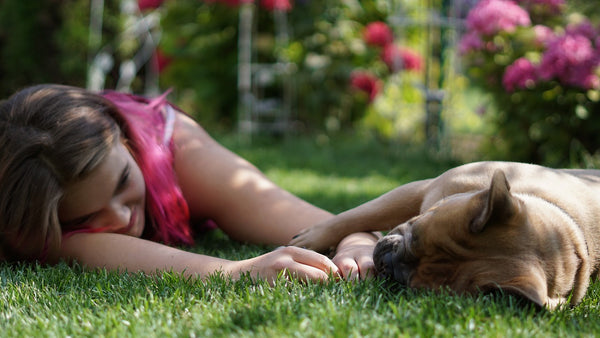Greening Your Space: A Guide to Pet-Friendly Gardening and Plants
Gardening is a wonderful way to connect with nature and enhance the beauty of your outdoor space. For pet owners, creating a pet-friendly garden is not just about aesthetics but also about ensuring the safety and well-being of our furry companions.
If you want to create a harmonious outdoor environment for both you and your beloved pets, below are some practical tips.
1. Know Your Pet's Habits
Before you start planning your pet-friendly garden, it's essential to understand your pet's behavior and preferences. Do they like to dig, chew, or roam freely? Knowing their habits will help you design a garden that caters to their needs.

2. Fence or Enclose
Install a sturdy fence or enclosure to keep your pets safe within your garden space. This not only protects them from potential dangers but also prevents them from wandering into neighboring gardens or the street.
3. Choose Pet-Safe Plants
Selecting pet-safe plants is crucial to ensure your pets' well-being. Here's a list of some common pet-friendly plants:
- Marigolds: These vibrant flowers add color and are non-toxic to pets.
- African Violet: A lovely houseplant that's safe for both cats and dogs.
- Spider Plant: An attractive and easy-to-maintain choice that's non-toxic to pets.
- Herbs like Rosemary and Basil: These culinary herbs are safe for pets and add fragrance to your garden.
- Catnip: A must-have for cat owners; it's an irresistible treat for felines.
4. Avoid Toxic Plants
Some plants can be harmful or even deadly to pets if ingested. Common toxic plants include azaleas, lilies, poinsettias, and oleander. Before introducing any new plants to your garden, research their toxicity level to ensure they won't harm your pets.
5. Create Pet Zones
Designate specific areas in your garden as pet zones. These spaces can include pet-friendly plants, water features, and even pet toys. Having dedicated spaces for your pets encourages them to explore safely.
6. Mulch Mindfully
Choose mulch made from materials that are non-toxic to pets, such as cedar or pine. Avoid cocoa mulch, which contains substances that can be harmful to dogs if ingested.
7. Chemical-Free Gardening
Opt for natural, pet-safe fertilizers and pesticides. Chemicals commonly used in gardens can be toxic to pets if they come into contact with them or ingest treated plants.

8. Supervise and Train
While your garden may be pet-friendly, supervision is still key. Train your pets to respect the garden boundaries and discourage behaviors like digging or nibbling on plants.
9. Provide Shade and Water
Ensure your garden offers shaded areas and a source of clean, fresh water to keep your pets comfortable during hot weather.
Creating a pet-friendly garden is a rewarding endeavor that benefits both you and your furry companions. By selecting pet-safe plants, implementing safety measures, and providing designated pet zones, you can create a beautiful and secure outdoor space where your pets can thrive. Remember that with thoughtful planning and attention to detail, your garden can become a haven of tranquility and enjoyment for the whole family, including your beloved four-legged friends.